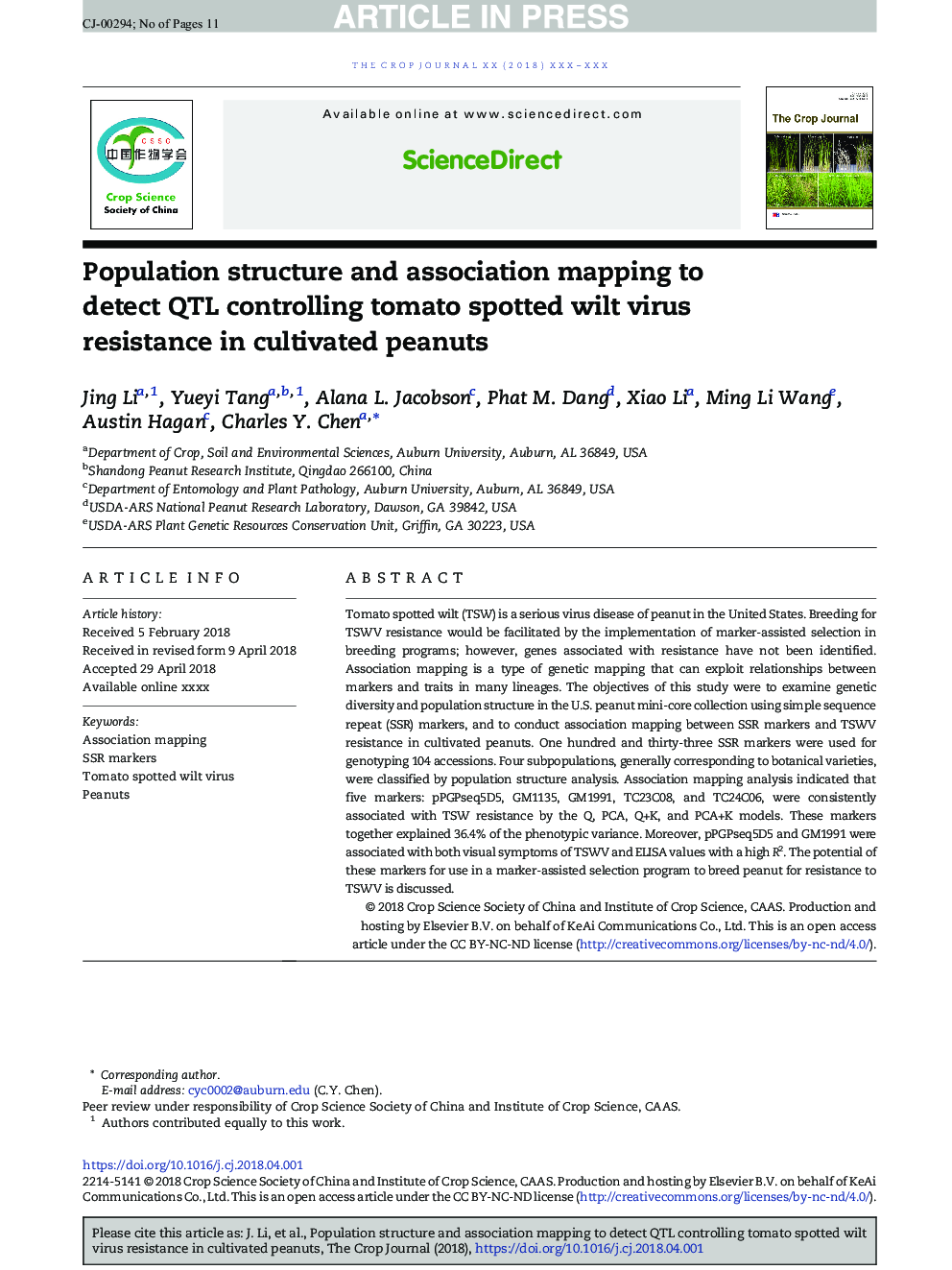| Article ID | Journal | Published Year | Pages | File Type |
|---|---|---|---|---|
| 11015365 | The Crop Journal | 2018 | 11 Pages |
Abstract
Tomato spotted wilt (TSW) is a serious virus disease of peanut in the United States. Breeding for TSWV resistance would be facilitated by the implementation of marker-assisted selection in breeding programs; however, genes associated with resistance have not been identified. Association mapping is a type of genetic mapping that can exploit relationships between markers and traits in many lineages. The objectives of this study were to examine genetic diversity and population structure in the U.S. peanut mini-core collection using simple sequence repeat (SSR) markers, and to conduct association mapping between SSR markers and TSWV resistance in cultivated peanuts. One hundred and thirty-three SSR markers were used for genotyping 104 accessions. Four subpopulations, generally corresponding to botanical varieties, were classified by population structure analysis. Association mapping analysis indicated that five markers: pPGPseq5D5, GM1135, GM1991, TC23C08, and TC24C06, were consistently associated with TSW resistance by the Q, PCA, Q+K, and PCA+K models. These markers together explained 36.4% of the phenotypic variance. Moreover, pPGPseq5D5 and GM1991 were associated with both visual symptoms of TSWV and ELISA values with a high R2. The potential of these markers for use in a marker-assisted selection program to breed peanut for resistance to TSWV is discussed.
Related Topics
Life Sciences
Agricultural and Biological Sciences
Agronomy and Crop Science
Authors
Jing Li, Yueyi Tang, Alana L. Jacobson, Phat M. Dang, Xiao Li, Ming Li Wang, Austin Hagan, Charles Y. Chen,
